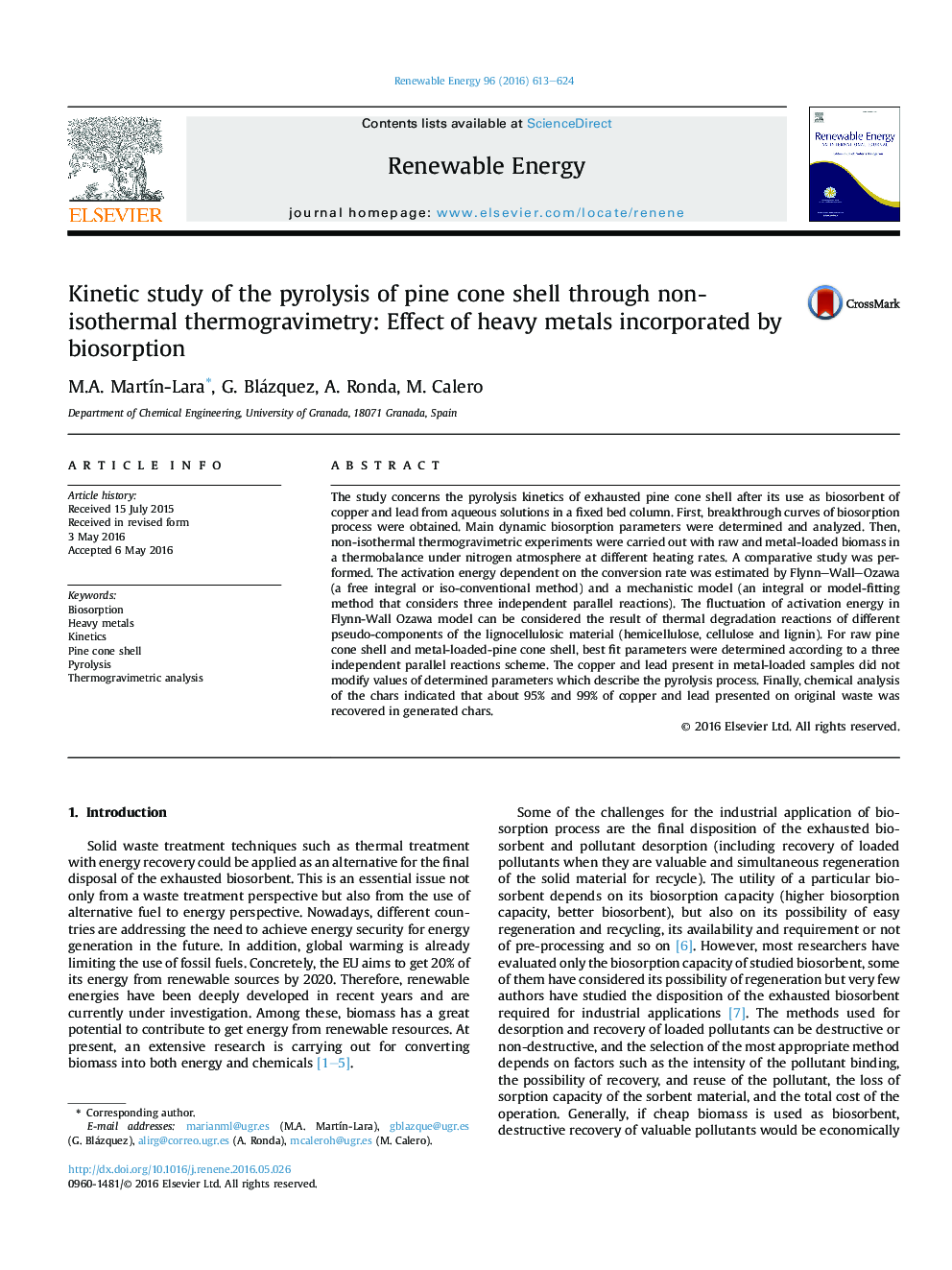| Article ID | Journal | Published Year | Pages | File Type |
|---|---|---|---|---|
| 10293903 | Renewable Energy | 2016 | 12 Pages |
Abstract
The study concerns the pyrolysis kinetics of exhausted pine cone shell after its use as biosorbent of copper and lead from aqueous solutions in a fixed bed column. First, breakthrough curves of biosorption process were obtained. Main dynamic biosorption parameters were determined and analyzed. Then, non-isothermal thermogravimetric experiments were carried out with raw and metal-loaded biomass in a thermobalance under nitrogen atmosphere at different heating rates. A comparative study was performed. The activation energy dependent on the conversion rate was estimated by Flynn-Wall-Ozawa (a free integral or iso-conventional method) and a mechanistic model (an integral or model-fitting method that considers three independent parallel reactions). The fluctuation of activation energy in Flynn-Wall Ozawa model can be considered the result of thermal degradation reactions of different pseudo-components of the lignocellulosic material (hemicellulose, cellulose and lignin). For raw pine cone shell and metal-loaded-pine cone shell, best fit parameters were determined according to a three independent parallel reactions scheme. The copper and lead present in metal-loaded samples did not modify values of determined parameters which describe the pyrolysis process. Finally, chemical analysis of the chars indicated that about 95% and 99% of copper and lead presented on original waste was recovered in generated chars.
Related Topics
Physical Sciences and Engineering
Energy
Renewable Energy, Sustainability and the Environment
Authors
M.A. MartÃn-Lara, G. Blázquez, A. Ronda, M. Calero,
